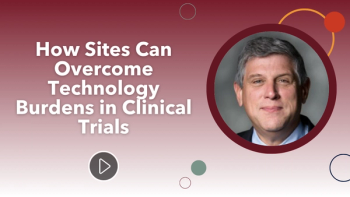
Site Calls for IRT Simplicity
Roger DeRaad of Black Hills Cardiovascular Research and his staff discuss their experiences using IRT systems with 4G Clinical’s Kathleen Greenough. They offer insights into how sites, sponsors and technology vendors can cooperate to bring simplicity to clinical trials.
At CBI’s most recent IRT (Interactive Response Technologies in Clinical Trials) conference, Roger DeRaad, MN, CNP, Director of Research at Black Hills Cardiovascular Research participated in a fireside chat with Catherine Hall, Associate Director of Clinical Trial Material Management at Sunovion about balancing the regulatory requirements of the trial sponsor with the needs of the end-user. It became clear during that exchange that there is still a disconnect between how the IRT systems are designed and deployed with the workflow at the site level.
In an interview following the event, DeRaad and members of his staff spoke with industry veteran and Client Services Lead at 4G Clinical Kathleen Greenough about their experiences in utilizing IRT systems (among many others) at their site. They offered insight into how sites, sponsors and technology vendors can work together to bring much needed simplicity to clinical trials.
Kathleen Greenough: How long have you been working at a clinical site? How many trials do you have today?
Roger DeRaad: I have been working at Black Hills Cardiovascular Research for 20 years, since its inception. My staff has an average of 10 years of experience. We have a pretty experienced staff. We currently have 42 active trials, half of which are enrolling patients and 75% are within CV. The others fall into various specialty practices.
KG: How many sponsors do you currently work with? How many log-ins and passwords do you need to keep track of?
RD: Of the 42 active trials, we work with 38 trial sponsors. On average, we have three to four major players for every trial including CROs, AROs and trial sponsors. Personally, I have 72 log-ins and passwords to keep track of for just IRT. My regulatory assistant has 190+. That’s a lot of IRT systems to work with.
KG: Tell us about your favorite IRT systems (no names please). What do you like about them?
RD: I might have my staff jump in here and give you some of their ideas.
Staff: The system we like the most is very user-friendly and we use that system for several different studies. It is very aesthetically pleasing and easy to follow. The information we are looking to extract is linear, easy to go from point A to B and retrieve information. It is uniform throughout, so it curbs some of the training we’ve had to do because they are familiar with how that system works.
To go more in-depth on training, often you train 3 months before the study starts. By the time the study actually starts, you’ve forgotten most of the training. Many of the systems we use give you [another] user name and password for a different site to get the training. Once completed, you get [yet another] user name and password to gain access to the actual system. It would be nice if it would be all in one system.
KG: Sometimes it depends on the training requirements of the sponsor, correct?
RD: Yes, the trouble with sponsor requirements is they are more worried about checking-off the box rather than if the training is productive or not.
KG: Do you have any horror stories whereby technology limitations impacted your ability to provide the best care to your patients?
RD: Not horror stories, per se. However, the worst scenario is when you have a patient waiting in your office but can’t focus on them because you are figuring out the system or dealing with a technology glitch. There was an infusion trial where we were locked out of the system. We had to wait for 30 minutes for the system to reset, the help desk couldn’t override the system so the patient had to wait. Those are kind of things that bother us the most.
KG: Have you ever been asked for your feedback on the use of IRT at your site?
RD: No. We have never been approached, even during a study, for feedback. Prior to talking to your staff, we have never been approached - even during a study.
KG: Are you saying you are more willing to give feedback? Do you feel plagued by getting too many surveys from sponsors?
RD: If were surveyed early on instead of when the trial is over, I would be more inclined to provide input. That way we feel that our responses would have an impact on the overall process.
KG: Are there one or two key things pharma companies should consider when developing and IRT system?
RD: They need to remember they are 1 of 38 systems that we’re using. You are developing clever innovations, but know that they may or may not be welcome at the site. Be careful that your innovation is helpful enough for the site to make it worth treating your trial differently than all the others. And by all means, ask the site for input.
Kathleen Greenough is Client Services Lead at
Newsletter
Stay current in clinical research with Applied Clinical Trials, providing expert insights, regulatory updates, and practical strategies for successful clinical trial design and execution.






.png)



.png)



.png)
.png)
